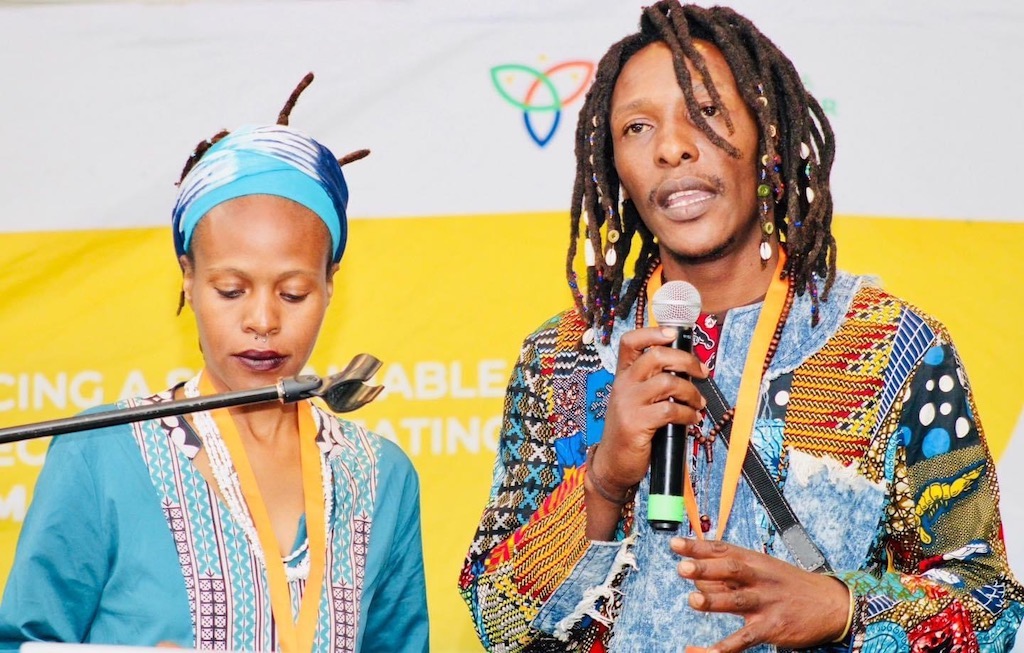
07 Nov Mining’s mess is JET’s opportunity
Mine rehabilitation presents an opportunity for environmental restoration and economic empowerment in the energy transition. Thabo Molelekwa investigates

Nick and Nichole Nyalungu, winners of the Mpumalanga Green Innovation Challenge. Photo courtesy Mpumalanga Department of Economic Development and Tourism
South Africa faces a daunting challenge with thousands of abandoned coal mines and billions in unspent rehabilitation funds. In Mpumalanga province, home to about 80% of the country’s coal mines, mine restoration holds potential benefits for the Just Energy Transition (JET).
“When the rehabilitation efforts are effective, the land and water would be available for a variety of economic empowerment projects for the surrounding communities, such as tourism, food and biomass agriculture, or for renewable energy generation, such as solar PV or wind farms. These possibilities present a vision for how restored land could drive sustainable economic development,” said Carla Hudson, programme manager at the Mpumalanga Green Cluster Agency.
According to Hudson, there are many former mining sites in Mpumalanga that require rehabilitation and the Department of Mineral Resources and Energy (DMRE) has identified 26 priority areas in the province that need urgent attention because they are unstable and are at risk of falling or collapsing.
Hudson believes rehabilitation can contribute to both short-term job creation and long-term community empowerment. Examples of how local communities can benefit from restored land and support agriculture, offering new livelihoods to former mining communities, include a mine-affected water reuse project for agriculture run by Mafube; a passive water treatment pilot project at the eMalahleni water treatment works; and a blueberry production project run by Exxaro.
Multinational mining company Glencore has a winter wheat pilot project in Mpumalanga that is using two former mining sites next to Wonderfontein Colliery that are owned by the local community. The pilot confirmed that winter wheat can be grown in Mpumalanga successfully, and that rehabilitated mine land and mine water can be used to grow and irrigate this important crop.
“The success of these projects depends on collaboration between the private sector, government and local communities,” Hudson added.
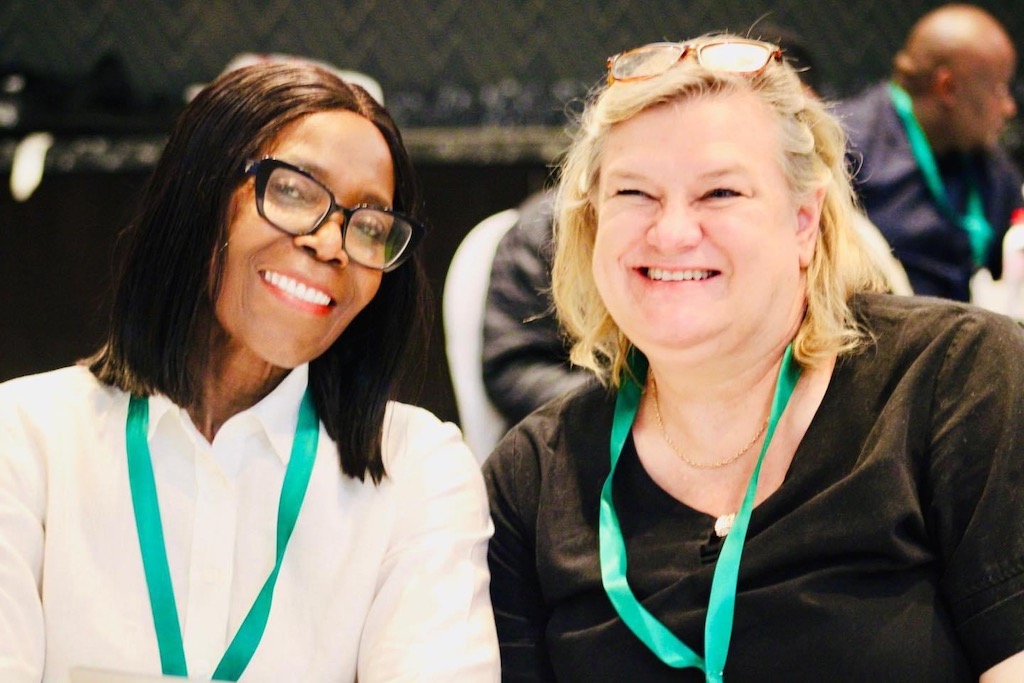
Carla Hudson (right) at the Green Innovation Challenge awards this week. Photo courtesy Mpumalanga Department of Economic Development and Tourism
Green innovation
The Mpumalanga Green Cluster Agency, a non-profit organisation that works to advance a sustainable green economy in the province, showcased several community-led projects at its annual Green Innovation Challenge this week. Winning projects included one that produces charcoal briquettes from agricultural waste; one that turns old tyre rubber tubes into fashion products; and another that recycles waste materials in local communities.
Beyond economic opportunities, Hudson pointed out the importance of mine rehabilitation for biodiversity conservation. “National legislation stipulates that rehabilitated land should resemble its pre-mining condition. Where this is not possible, projects that restore biodiversity should be implemented, such as regenerative farming and the removal of alien vegetation,” she explained. Hudson said this approach not only revitalises ecosystems but also promotes sustainable agricultural practices in the region.
As Mpumalanga gradually shifts away from coal mining as part of the JET process, Hudson sees opportunities to integrate rehabilitation efforts into broader strategies for sustainable economic development. “There are many social and economic development opportunities through rehabilitation efforts, and these can play a key role in supporting Mpumalanga’s just transition,” she said.
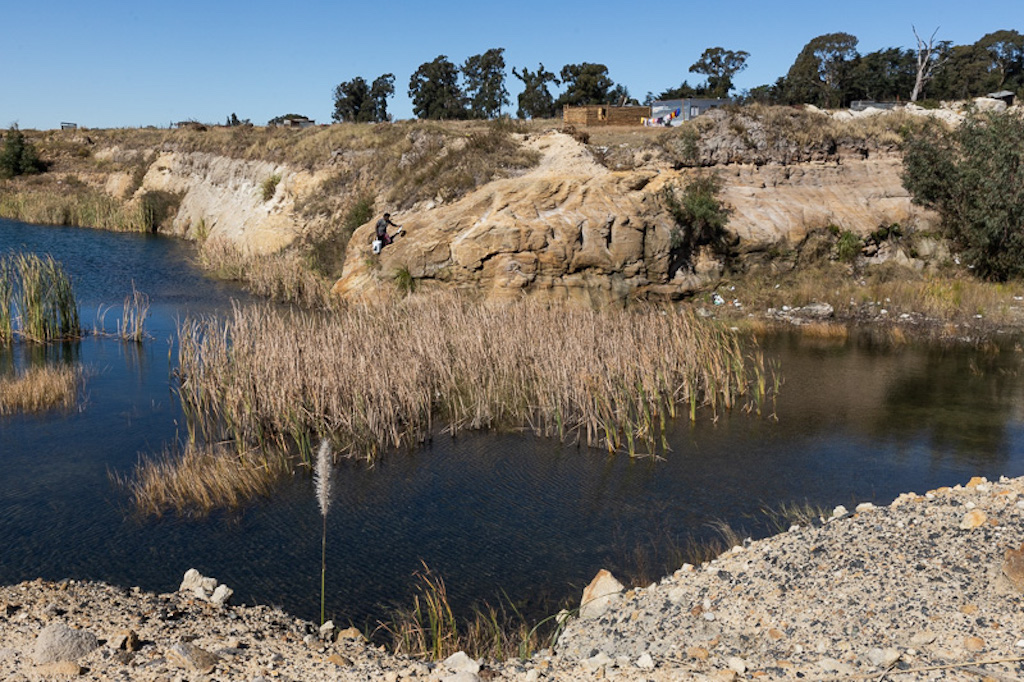
The abandoned Imbabala coal mine near Ermelo’s Wesselton township. Numerous community members have been killed by cave-ins, either adults digging for coal or children playing in the mine. Photo: Ashraf Hendricks
Abandoned mines
In 2017, data-driven investigations by the Oxpeckers #MineAlert programme revealed that there are more than 6,000 abandoned mines across South Africa, and while billions of rands are set aside for mine rehabilitation much of this funding is inaccessible due to structural barriers in the mine closure process. The investigations found that these structural hurdles have contributed significantly to ongoing challenges in addressing the environmental and social impacts of abandoned mines.
“The total area affected is hard to determine, as some mines are on private or unknown lands, but estimates suggest millions of hectares remain impacted,” said Nonhlanhla Radebe, manager at the WWF-SA JustSA project. The Parliamentary Monitoring Group estimated in 2017 that national rehabilitation efforts would cost R47-billion.
According to Hudson, the Department of Forestry, Fisheries and the Environment is finalising the National Environmental Management Laws Amendment Act to address these hurdles. The new legislation aims to strengthen financial provisioning for mine closure and rehabilitation, ensuring that companies are held accountable for the environmental damage they cause. Hudson welcomed this move, but stressed that funding and capacity at both the provincial and local levels remain critical obstacles.
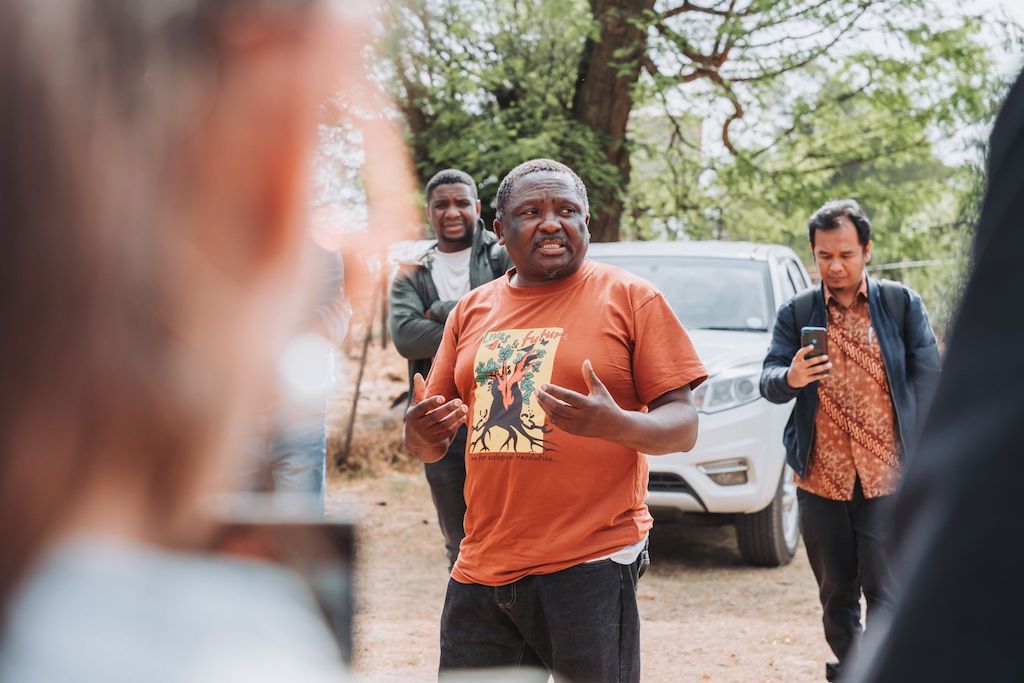
International delegates visit the Mkhondo Agri-hub, led by Matthews Hlabane (centre), which produces food and creates jobs for workers transitioning away from the coal and steel industries. Photo: Jessica Meniere
International experts
A recent gathering of experts from coal regions around the world, hosted by the International Climate Initiative JET Project in Pretoria, discussed the pressing issues these areas face, including the urgent need for effective mine closure and rehabilitation strategies. International and South African experts shared insights on a just transition away from coal, underscoring the critical role of community consultation, economic diversification and government intervention in achieving a sustainable and equitable future.
To further explore these issues, delegates at the forum embarked on a tour to Mpumalanga. During their visit, they witnessed firsthand the importance of small, medium and micro enterprises in South Africa’s JET. One of the initiatives they visited was the Mkhondo Agri-hub, led by former union activist Matthews Hlabane.
By rehabilitating agricultural land, Hlabane’s farm produces food and creates jobs for workers transitioning away from the coal and steel industries. The farm currently employs 30 full-time staff and another 30 to 40 temporary workers, cultivating vegetables and rearing livestock. The harvested produce is then sold back to local community members at affordable prices.
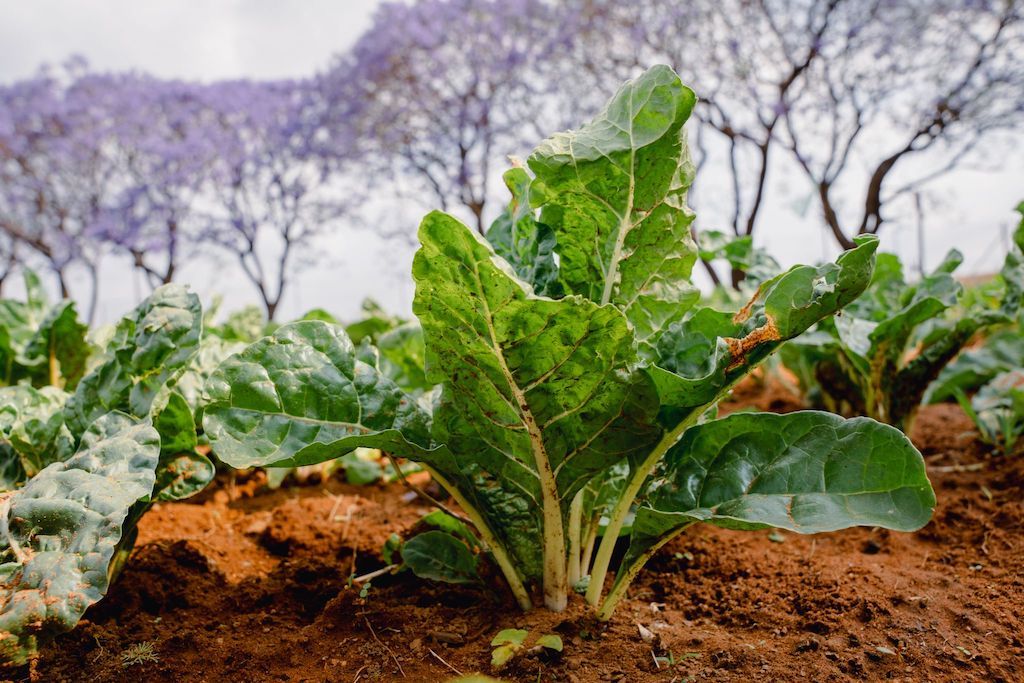
In the coal-rich regions of Mpumalanga, decades of mining pollution have left the land contaminated, making it challenging for local communities to cultivate crops. Photo: Jessica Meniere
Practical solutions
John Zvimba, research manager for mining and industrial water management at the Water Research Commission (WRC), emphasised the importance of finding practical solutions for managing mining-influenced water, a byproduct of coal mining that poses significant environmental risks.
“Strict regulations are in place to prevent pollution from spreading, making it challenging to use mining-influenced water for agriculture,” he explained. The WRC has been developing guidelines for the safe use of mining-influenced water in irrigation, with the aim of offering solutions for mines and regulators across the country.
The commission has also been involved in research to support South Africa’s green hydrogen economy, an emerging industry that could provide new economic opportunities for mining regions like Mpumalanga. “Our research projects support the just transition initiative, particularly the JET,” Zvimba said, highlighting the potential for mine rehabilitation to align with South Africa’s broader shift towards renewable energy and sustainable development.
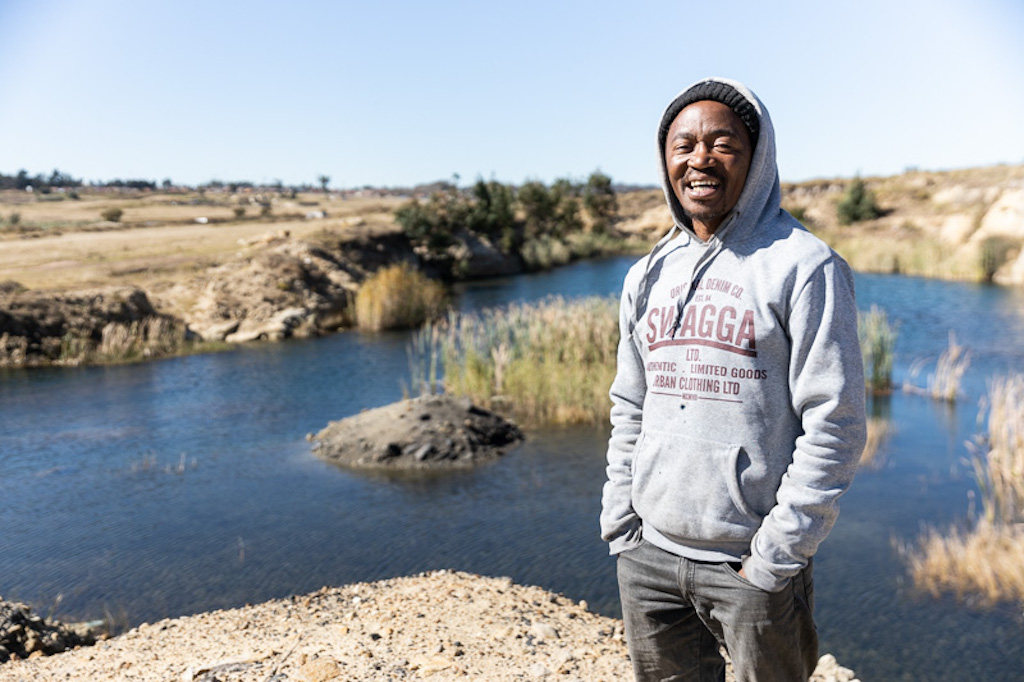
Zethu Hlatshwayo, national coordinator of the National Association of Artisanal Miners (NAAM), at the abandoned Imbabala coal mine near Ermelo. He told Oxpeckers several of the abandoned mines NAAM members are operating need to be rehabilitated because they are dangerous. Photo: Ashraf Hendricks
DMRE’s programme
DMRE spokesperson Makhosonke Buthelezi said the department’s mine rehabilitation programme is currently focused on asbestos mines. “Coal commodities are not yet prioritised for DMRE rehabilitation; however, in future they will be rehabilitated for human safety and environmental protection,” he said.
Buthelezi said the “rehabilitation of derelict and ownerless mines and sealing of unsafe mine openings has no link or relevancy with renewable energy nor the just transition. All derelict and ownerless mines are rehabilitated to return the land to its natural state and to ensure the safety of humans, including environmental protection, but not to be repurposed for renewable energy.”
The department has allocated R181.9-million to its mine rehabilitation programme for the 2024/5 financial year, he said. Of this amount, R31-million is earmarked for managing mine water – including an ingress control treatment project in Carolina in Mpumalanga.
The DMRE has rehabilitated approximately 55 derelict and ownerless mines across South Africa, he said. “The priority is on asbestos mines due to its effects on the local communities. In Mpumalanga, only one asbestos mine [has been] rehabilitated, in the vicinity of Msauli.”
Buthelezi added that the department is currently facing challenges of illegal mining and illegal dumping, “which delays the progress on rehabilitation of abandoned mines. The challenge is resolved through collaboration with law enforcement such as SAPS [South African Police Service] and NDF [National Defence Force].”
He pointed out that all holders of mining rights and permits are issued with compliance notices by DMRE when found not to be adhering to their rehabilitation obligations. Penalties for non-compliance range from administrative sanction to criminal procedures. “These measures have proven to be effective where they are invoked,” he said.
Thabo Molelekwa is assistant editor of the Oxpeckers #PowerTracker project.
- Track the development of energy projects across Mpumalanga province on the Oxpeckers #PowerTracker tool
